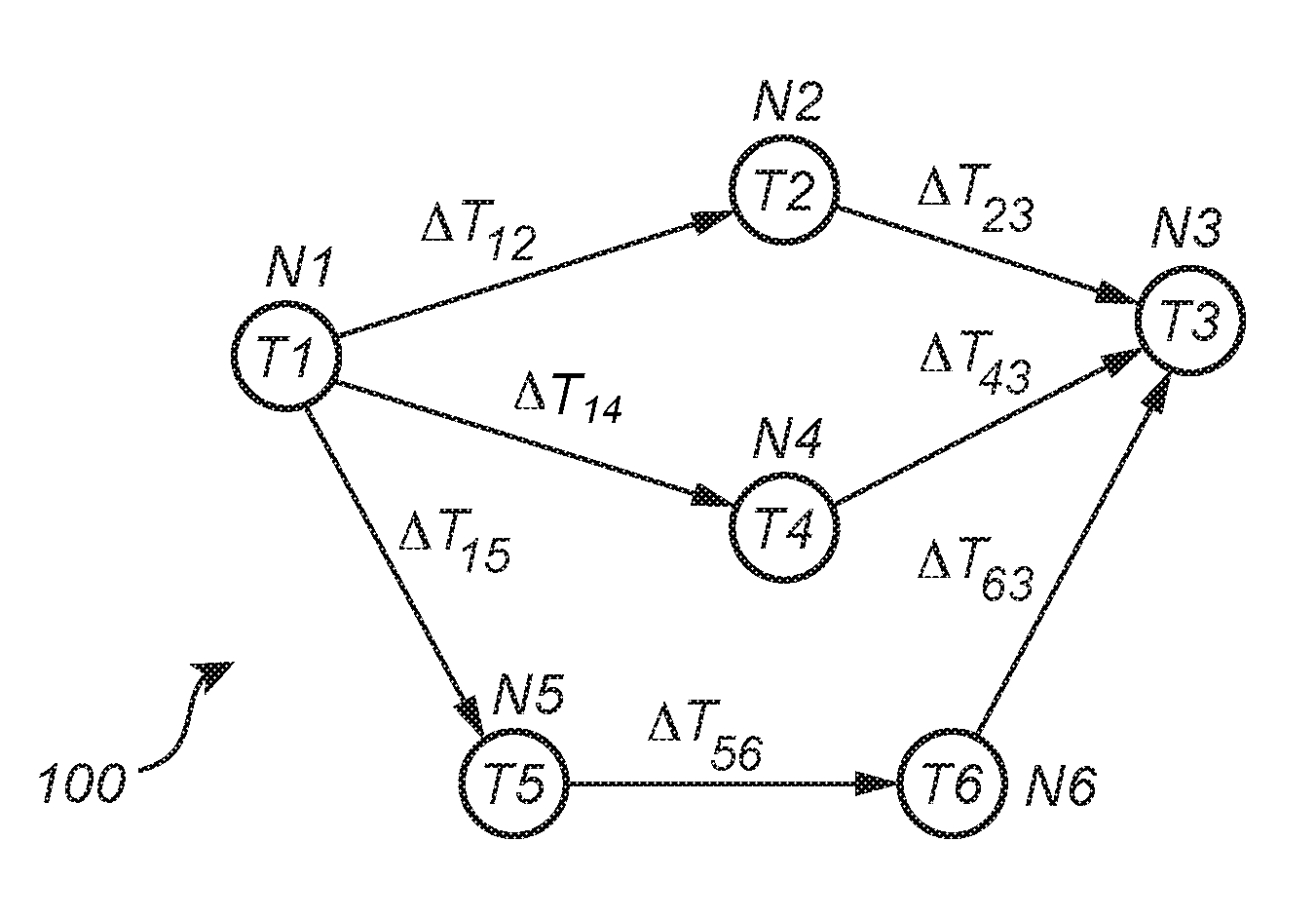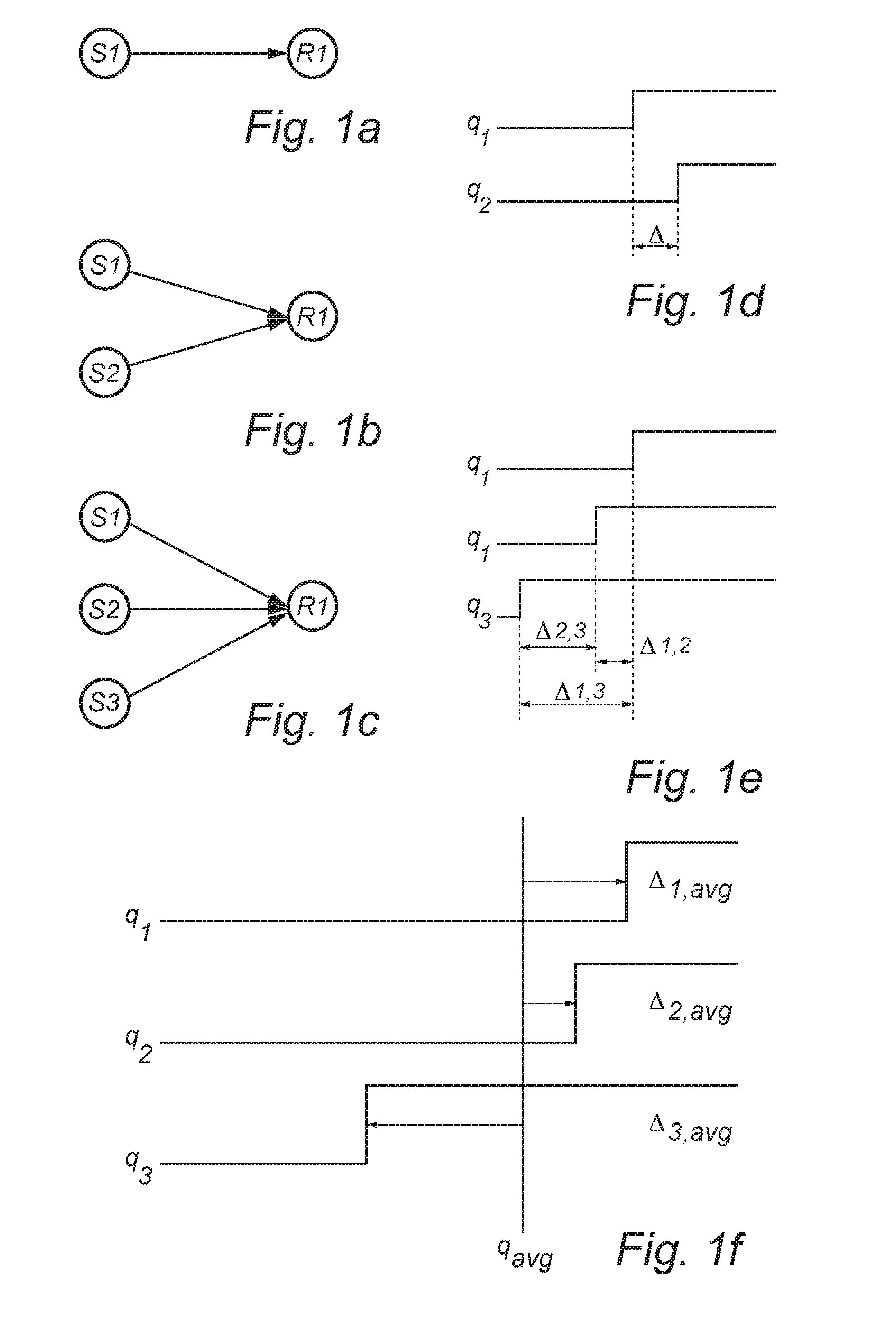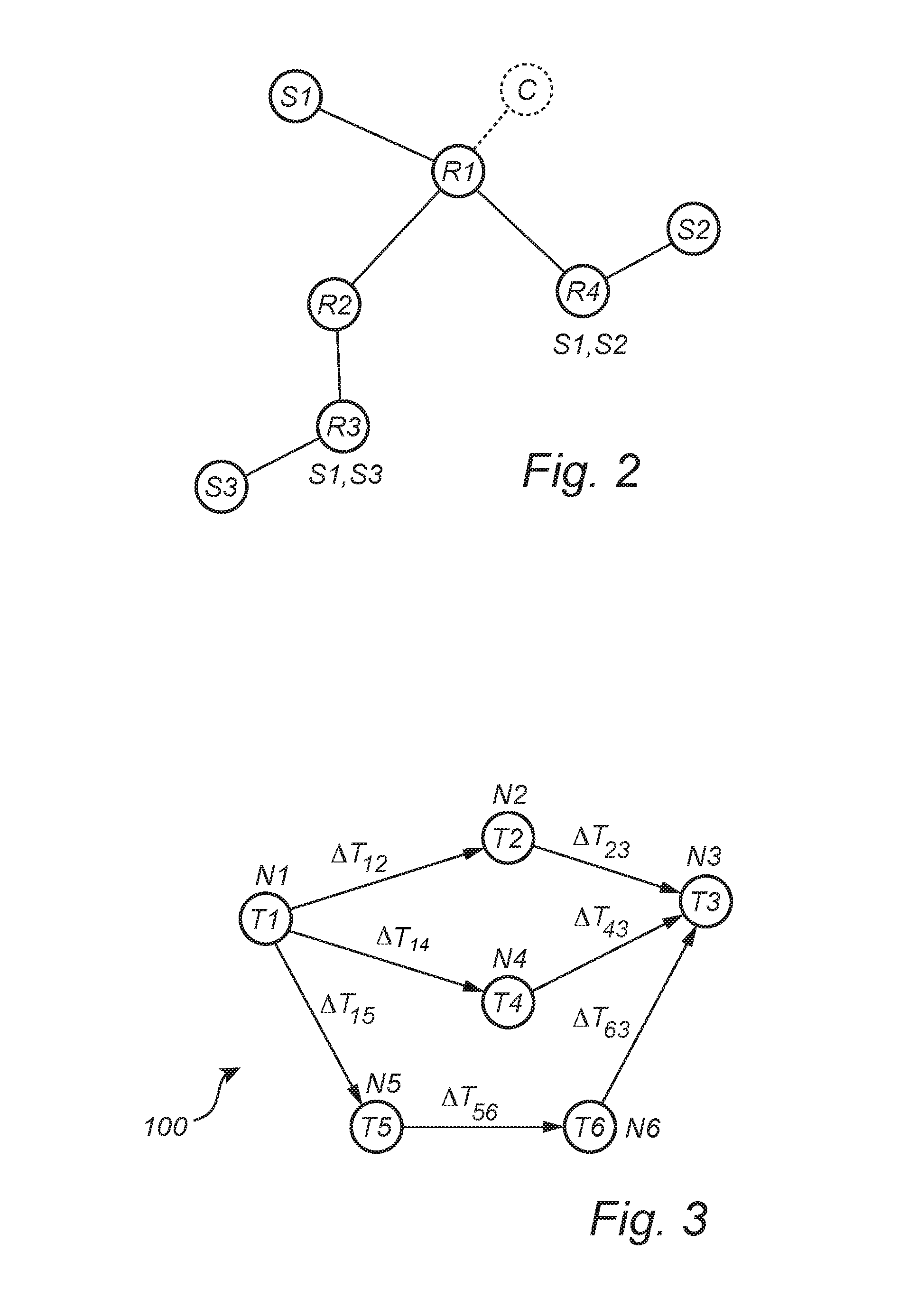Method in a communication network
a communication network and communication network technology, applied in the field of communication network systems, can solve the problems of not being able to compare disparate, not having the capability of topologically disassociated timing sources, and not being able to achieve the effect of scalable and accurate network wide area networks
- Summary
- Abstract
- Description
- Claims
- Application Information
AI Technical Summary
Benefits of technology
Problems solved by technology
Method used
Image
Examples
Embodiment Construction
[0028]In an exemplifying embodiment of the present inventive concept, a DTSV method is employed in a two-way transfer communication network system (not shown) comprising nodes capable of two-way time-transfer with node-to-node transmission of data packets. Each node comprises a local clock, at least one network interface capable of transmitting node clock information, and receiving clock information to and from neighboring nodes. Each node is arranged to steer its clock from a selected network interface or another non-network interface. Further, each node is able to convey its clock information on a non-network interface using the transmitting- and receiving network interface in a two-way time-transfer means between two neighbor nodes. Between neighboring nodes, this allows comparison of time, round-trip time between nodes, time or frequency on interface to node with node time, and allows for reporting, i.e. distributing, time or frequency differences between nodes. Thereby the capa...
PUM
 Login to View More
Login to View More Abstract
Description
Claims
Application Information
 Login to View More
Login to View More - R&D
- Intellectual Property
- Life Sciences
- Materials
- Tech Scout
- Unparalleled Data Quality
- Higher Quality Content
- 60% Fewer Hallucinations
Browse by: Latest US Patents, China's latest patents, Technical Efficacy Thesaurus, Application Domain, Technology Topic, Popular Technical Reports.
© 2025 PatSnap. All rights reserved.Legal|Privacy policy|Modern Slavery Act Transparency Statement|Sitemap|About US| Contact US: help@patsnap.com



